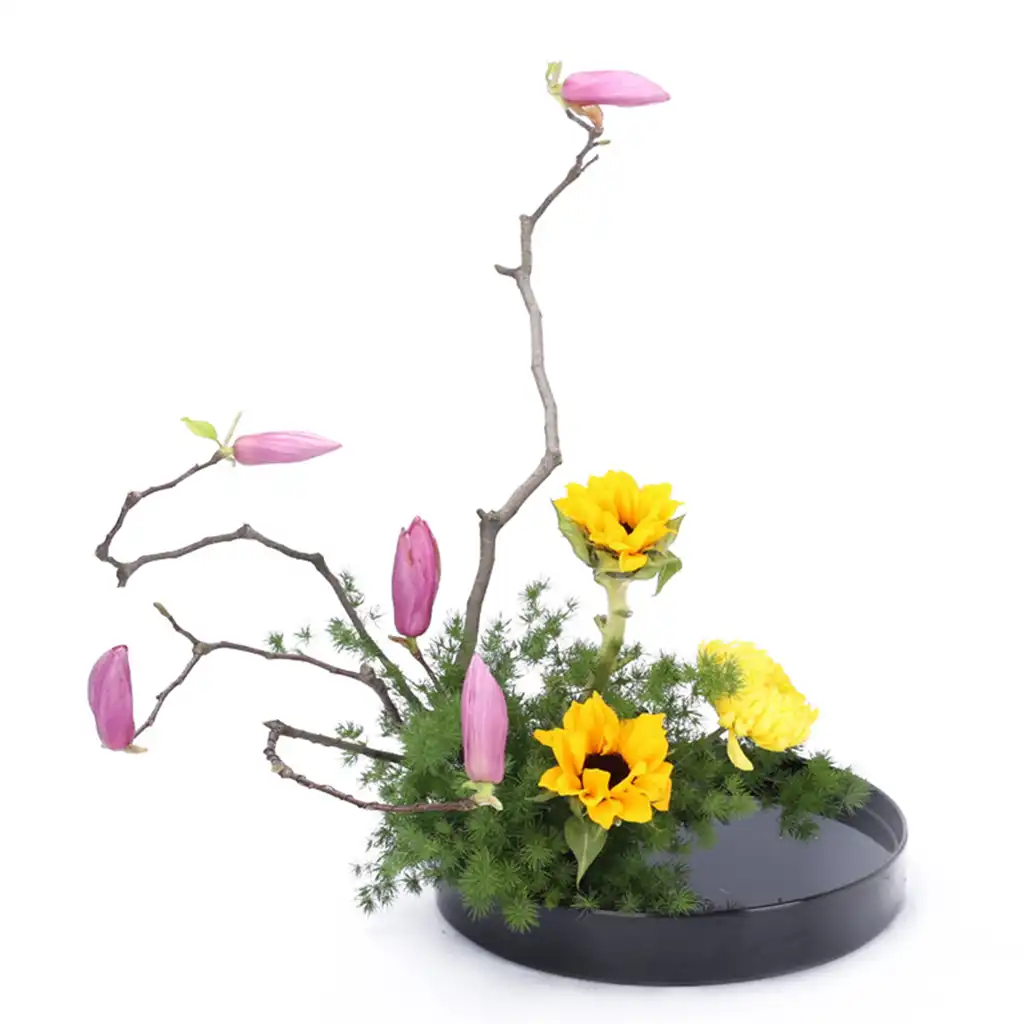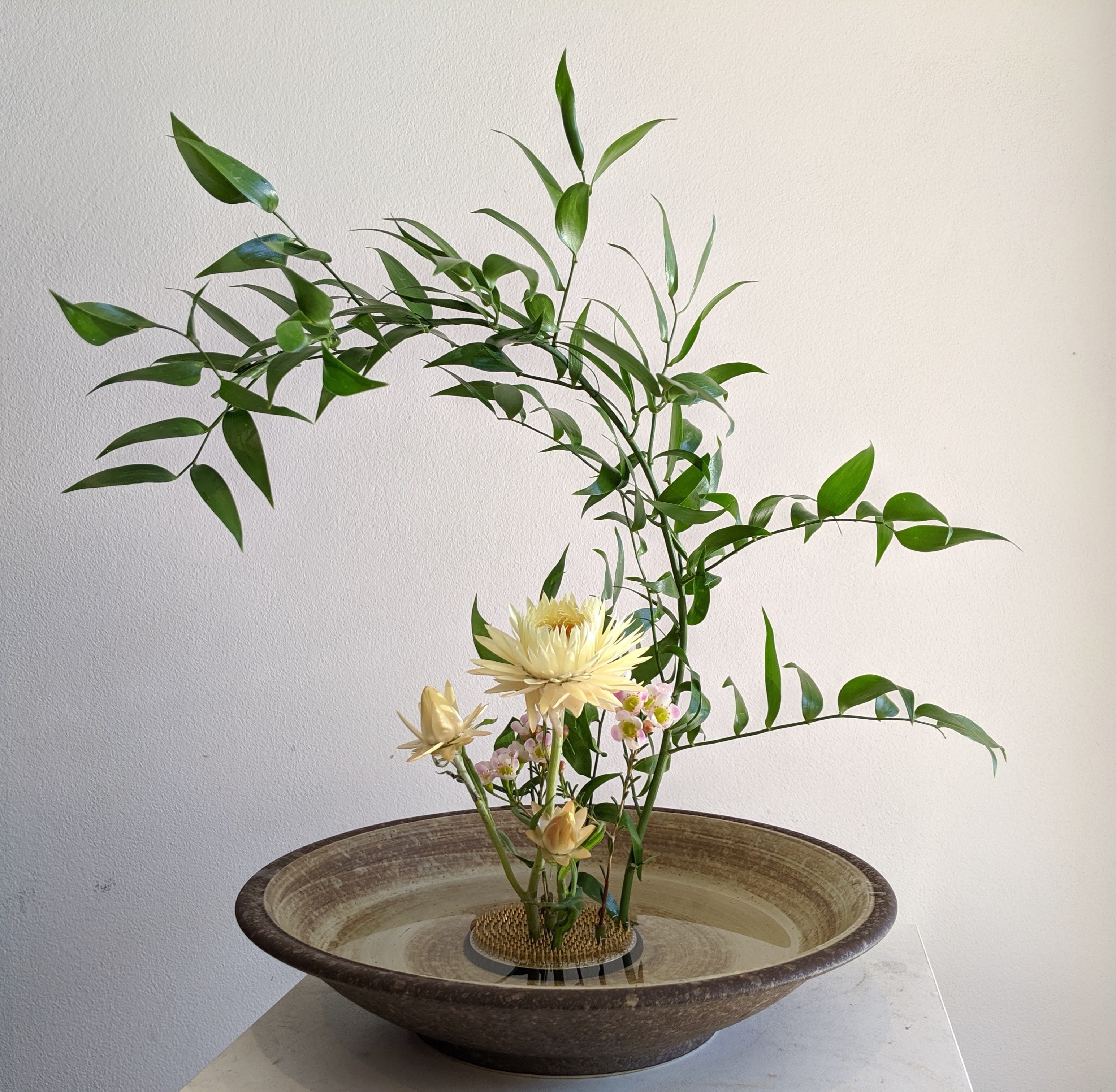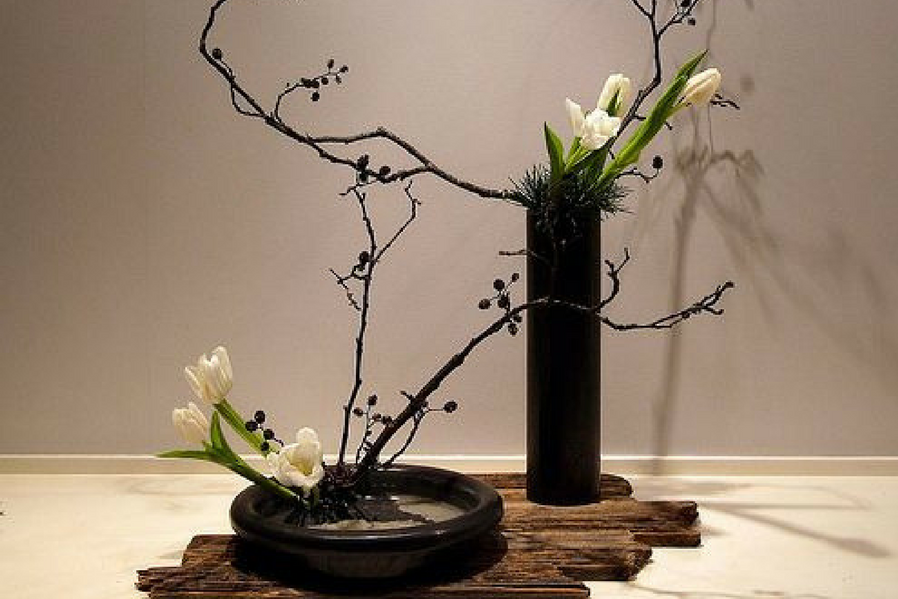3 Easy Steps to Create a Ikebana Japanese Floral Design
Ikebana, also called Kado, is the Japanese art of floral arrangement. This style of floral design dates back to the 17th century.

Unlike traditional western floral arrangements, Ikebana floral arrangement places more emphasis on the angles of the elements, the number of elements and the type of vase these elements are displayed in. There is less emphasis on bushels of blossoms and blooms of different kinds of flowers.
Step 1: Choose a vase
In Ikebana floral design, the vases and vessels your arrangement is displayed in are as important as the elements arranged inside of them. In Japanese, the vases are called “Utsuwa.”

Typically handmade, but not absolutely necessary, an utsuwa can come in various shapes, sizes and materials. The elements and the utsuwa they are placed in come together to create a serenely austere design. The natural simplicity and minimal arrangement draw attention to it, similar to the way some works of art do, while remaining complementary to the overall design.
Ikebana Vases: Bamboo cylindrical vase, narrow-mouthed tall cylindrical vase, nageire vase, ceramic basket vase, shallow round vase, flat round vase, shallow round dish or suiban vase.

Kenzan: You can also arrange your Ikebana floral designs using a shallow round dish. Fill it with water and add a floating kenzan inside of it. A kenzan is a metal holder with prongs that you can fasten the flowers, branches, twigs, foliage and other elements onto as it gently floats atop the water.
Step 2: Choose your natural elements
A traditional Ikebana design contains 3 natural elements. It rarely exceeds more than 4 or 5 elements.

Ikebana element example: 1 branch, 1 leaf, 1 flower. If placed in a shallow utsuwa, the water the kenzan floats in can be considered its fourth element.
Step 3: Traditional angles and main element placement.

The first element (branch) is placed at a 10 – 15 degree left angle. It represents “Shin” or Heaven. The second element (leaf) is placed at a 45 degree left angle. It represents “Soe” or Man. The third element (flower) is placed at a 75 degree right angle. It represents “Hikae” or Earth. You can reverse this pattern as right angle, right angle, left angle. You do not have to stick to branches, leaves or flowers either. Each one can be a different element, the same element, or various elements. However, the angles remain the same in traditional Ikebana design.

If necessary, bind their stems together at the base to secure them. Use floral wire to bind stems together. Kenzans have metal prongs to help the elements stay in place as well. These are the main element placement angles. They are the most emphasized. However, you can add another flower or element along the base if you choose to. Keep in mind, asymmetry is a good thing in Ikebana floral design!

Ikebana floral design is a soothing practice with ancient roots in Japanese culture. It is a lovely natural accent to complement nearly all interior design settings, especially minimalist, modern and mid-century. Now that you know how to create your own traditional Ikebana floral arrangement in 3 easy steps, both your mental health and your interior design will benefit from it!